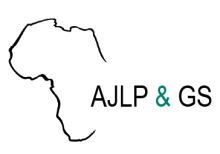Resource information
Dans le massif forestier du Sud-ouest de la République Centrafricaine, la terre représente, une richesse inaliénable pour les peuples autochtones Aka. C’est de la terre, que les Aka communément appelés pygmées, tirent l’essentiel de leurs subsistances. Raison pour laquelle, les ressources foncières ont fait l’objet d’attention particulière de ces premiers occupants du terroir, qui les ont régies par des normes juridico traditionnelles. Ces règles, quoique fondées sur l’oralité, requiert une valeur juridique, dont l’observance s’impose à toute la communauté. L’accession à l’indépendance, a introduit d’autres modes d’accès au foncier, caractérisés par la mise en valeur des espaces dits domaniaux et appartenant à l’Etat.Il ressort de l’étude, que le multi-juridisme a bouleversé les systèmes de gestion foncière des peuples autochtones Aka, posant ainsi, un problème de gouvernance foncière, ponctuée par une dialectique perpétuelle entre le coutumier et le moderne.


